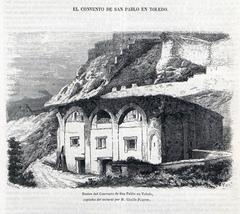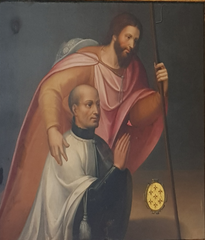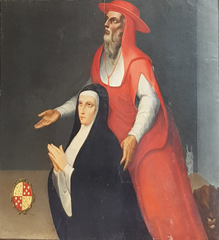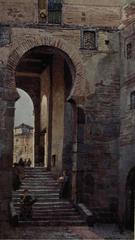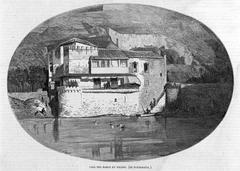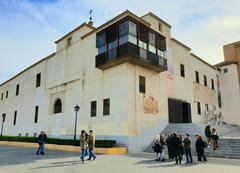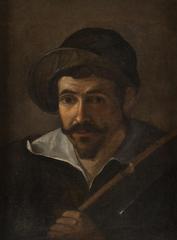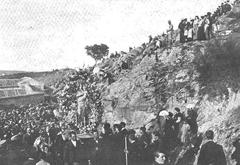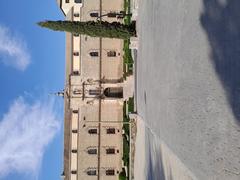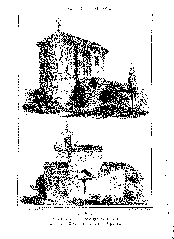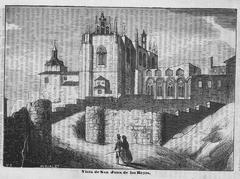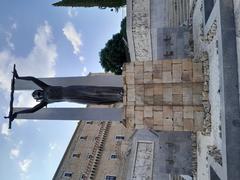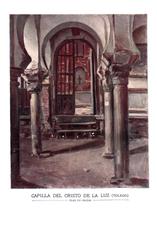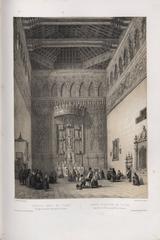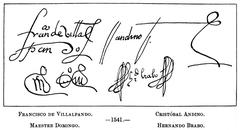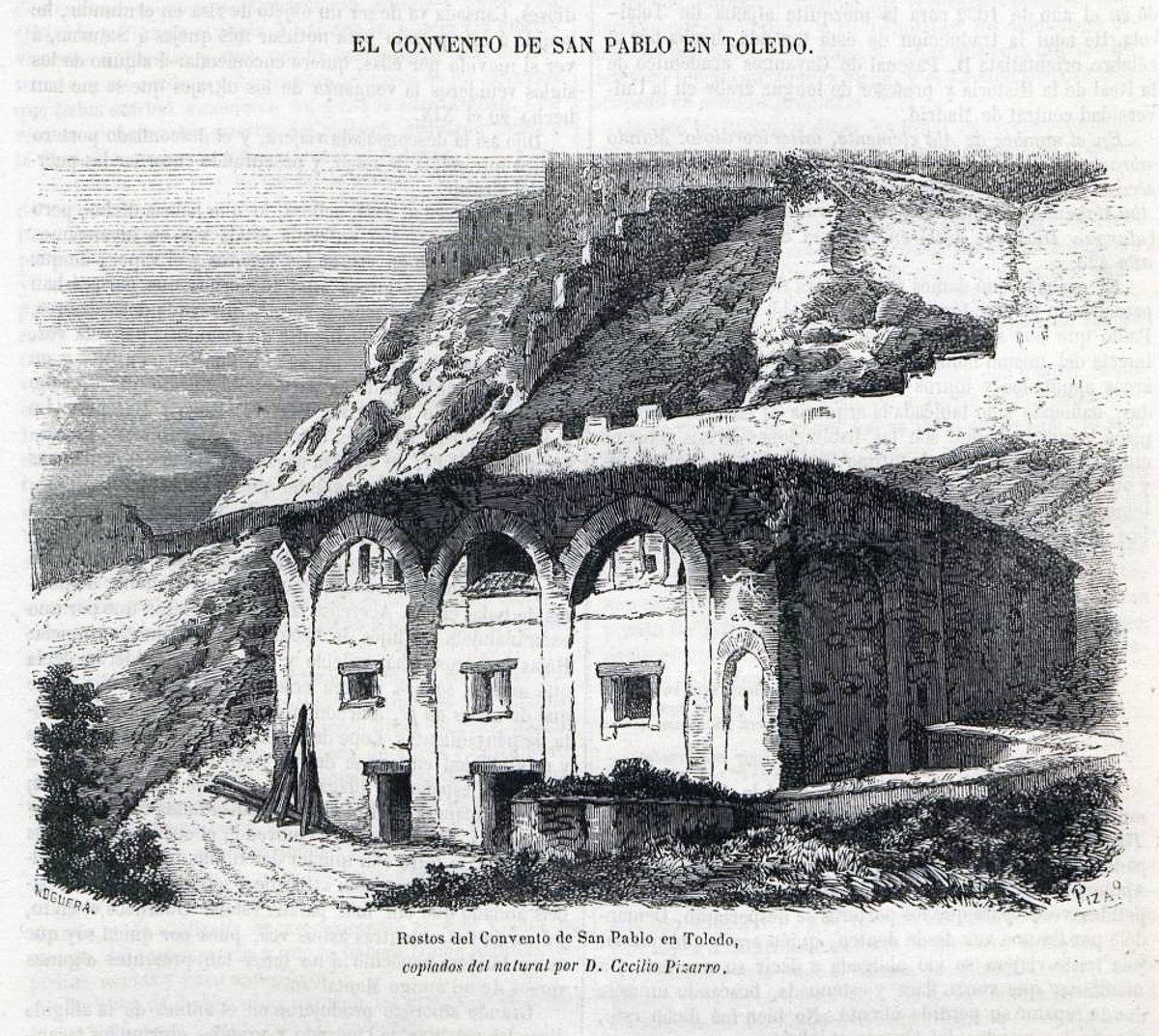
Convent of San Pablo, Toledo, Spain: Visiting Hours, Tickets, and Historical Sites Guide
Date: 14/06/2025
Introduction: Unveiling the Convent of San Pablo
Nestled in the heart of historic Toledo, Spain, the Convent of San Pablo stands as a testament to centuries of religious devotion, architectural evolution, and cultural synthesis. Its origins trace back to the late 14th century, when the influential Hieronymite order established a presence that would shape the city’s spiritual and artistic identity for generations. Over time, the convent’s architecture has absorbed Gothic, Renaissance, and Mudéjar influences, mirroring Toledo’s unique role as a crossroads of Christian, Jewish, and Muslim cultures.
The convent’s legacy extends beyond its walls—serving as a center for scholarly activity, charitable outreach, and spiritual formation, and contributing to Toledo’s status as a beacon of learning and religious coexistence. Today, the Convent of San Pablo invites visitors to explore its serene cloisters and discover its layered history while also providing access to neighboring landmarks such as the Toledo Cathedral and the Monastery of San Juan de los Reyes. This guide offers a detailed look at the convent’s history, architecture, visitor information, and practical tips for an enriching visit.
For more insights into Toledo’s religious and cultural heritage, consult the official Toledo tourism website and reputable travel resources (Paradores Blog, Tulaytula, Spain.info).
Contents
- Historical Context and Foundations
- Architectural and Artistic Significance
- The Convent’s Role in Toledo’s Religious and Cultural Life
- The Three Cultures of Toledo: Interfaith Context
- Suppression, Decline, and Modern Rediscovery
- Visitor Information
- Visiting Hours
- Tickets and Admission
- Getting There
- Accessibility
- Guided Tours
- Nearby Attractions
- Frequently Asked Questions
- Planning Your Visit
- Sources
Historical Context and Foundations
Founded in the late 14th century, the Convent of San Pablo was initially home to the Hieronymite order (Los Jerónimos), a congregation recognized by Pope Gregory XI in 1373. Their influence spread rapidly throughout Spain, with the Toledo convent ranking among the earliest and most significant foundations, closely tied to Spanish royalty and the Catholic Church (Encyclopedia.com).
The convent’s creation coincided with Toledo’s transformation after the Christian reconquest in 1085, marking a period of religious consolidation and the emergence of female monasticism. Under the leadership of María Garcías in the early 15th century, a community of Hieronymite nuns thrived here until the 19th-century suppression of religious orders, leaving a legacy that spanned over four centuries (Encyclopedia.com).
Architectural and Artistic Significance
The convent is emblematic of Toledo’s complex architectural narrative, reflecting shifts from medieval austerity to Renaissance refinement. Its original late 14th-century structure features Gothic elements—pointed arches, ribbed vaults, and stonework—while later expansions introduced Renaissance motifs, especially in the cloisters and chapels (Paradores Blog). Mudéjar influences also appear, echoing the interwoven traditions of Toledo’s multicultural past.
Key Features
- Cloister: The quadrangular cloister, with arcaded galleries and a central garden, is renowned for its harmony and tranquility (Tulaytula).
- Church: The convent church displays late Gothic architecture—ribbed vaulting, pointed arches, and a simple apse—along with restrained Renaissance and Baroque details.
- Artistic Heritage: Though some original artworks have been relocated, the convent once housed notable pieces, including a portrait of Cardinal Fernando Niño de Guevara by El Greco. Decorative elements such as Mudéjar ceilings and wrought ironwork further enrich the site (Tulaytula, Lonely Planet).
The Convent’s Role in Toledo’s Religious and Cultural Life
The Convent of San Pablo served as a spiritual and intellectual center, with the Hieronymite nuns renowned for their piety, scholarship, and charitable works. The convent was a hub for contemplative life, the copying of religious texts, and the education of young women from noble families. Its liturgical calendar and festivals became integral to Toledo’s civic life, fostering a tradition of religious observance and social outreach (Encyclopedia.com).
Beyond religious functions, the convent contributed to Toledo’s cultural landscape through its scriptorium, illuminated manuscripts, music, and annual processions. Its library, once among the most important in Castile, reinforced Toledo’s reputation as a center of learning (Paradores Blog).
The Three Cultures of Toledo: Interfaith Context
Toledo’s identity as the “City of Three Cultures” is reflected in the Convent of San Pablo’s surroundings. While a Christian institution, the convent stands near former synagogues and mosques, highlighting the city’s history of religious coexistence and exchange (Spain Less Traveled).
During the Middle Ages, collaboration among Christian, Jewish, and Muslim scholars in Toledo’s translation schools fostered a unique intellectual climate. The convent’s architectural details—such as Mudéjar motifs—are tangible reminders of this intercultural legacy.
Suppression, Decline, and Modern Rediscovery
The 19th-century suppression of religious orders led to the closure of the Convent of San Pablo and the dispersion of its community and treasures. The buildings were repurposed, and many artistic works were lost or relocated. However, renewed interest in Toledo’s monastic heritage has sparked restoration efforts, with the convent now recognized as a significant historical and cultural site (Paradores Blog).
Visitor Information
Visiting Hours
- Standard Schedule: Tuesday to Sunday, 10:00 AM – 6:00 PM; closed on Mondays and select public holidays.
- Note: Hours may vary seasonally or for special events. Confirm with the official Toledo tourism website before your visit.
Tickets and Admission
- Admission: Tickets are required and can be purchased on-site or online. Standard adult price is approximately €6, with discounts for seniors, students, and groups. Children under 12 typically enter free.
- Toledo Tourist Wristband: The convent is sometimes included in the “Pulsera Turística de Toledo,” a multi-site pass for €12 (AticketToTakeoff.com).
- Advance Booking: Recommended during peak seasons.
Getting There
- Location: Calle de San Pablo, 1, near Toledo’s old town edge.
- Access: Walkable from the Cathedral and San Juan de los Reyes; public buses and taxis serve the area. Driving is discouraged due to limited parking—use city parking lots like Safont or Paseo de la Rosa, then walk or use public escalators.
Accessibility
- Mobility: The convent is partially accessible; some historic areas may pose difficulties. Contact the administration in advance to arrange assistance (Audiala).
- Facilities: No on-site café or shop, but amenities are available nearby in the city center.
Guided Tours
- Guided Tours: Available in multiple languages. Tours may provide access to restricted areas and offer in-depth historical context (ToursByLocals).
- Audio Guides: Self-paced audio tours are offered via the Audiala app and other platforms.
Nearby Attractions
Enhance your visit by exploring these notable sites:
- Toledo Cathedral: A masterpiece of Gothic architecture nearby.
- Monastery of San Juan de los Reyes: Celebrated for its Isabelline style.
- Synagogue of El Tránsito: A symbol of Jewish heritage.
- Mosque of Cristo de la Luz: One of Toledo’s oldest Islamic monuments.
- Church of Santo Tomé: Home to El Greco’s “The Burial of the Count of Orgaz.”
Combining visits to these sites provides a broader understanding of Toledo’s cultural and religious richness (SpanishSabores.com).
Frequently Asked Questions (FAQ)
Q: What are the current visiting hours for the Convent of San Pablo?
A: Typically open Tuesday to Sunday, 10:00 AM–6:00 PM. Always check for updates before your visit.
Q: Are tickets required?
A: Yes, tickets are required for entry. Purchase on-site or online; advance booking is advised.
Q: Is the convent accessible for wheelchair users?
A: Partially accessible. Some historic areas have uneven floors or stairs—contact staff in advance for support.
Q: Can I take photographs?
A: Photography is generally allowed in public areas, but flash and photography during religious services may be restricted.
Q: Are guided tours available?
A: Yes, in several languages. Audio guides and specialized tours are also offered.
Q: Is there an entrance fee for exterior viewing?
A: No ticket is needed to view the exterior.
Planning Your Visit
- Dress Code: Modest attire is required—cover shoulders and knees.
- Photography: Respect restrictions and the sanctity of religious spaces.
- Best Times to Visit: Early mornings or late afternoons are quieter; special events such as Holy Week tours are popular.
- Combine Visits: Explore nearby landmarks for a fuller experience of Toledo’s “three cultures.”
- Safety and Preservation: Do not touch artworks or architectural features; food and drink are not permitted inside.
For up-to-date information and practical resources, use the Audiala app or check the official Toledo tourism website.
Summary: Embracing Toledo’s Heritage
The Convent of San Pablo encapsulates Toledo’s enduring connection between faith, art, and history. From its foundation as a Hieronymite convent to its evolving architectural tapestry, the convent remains an essential site for exploring the city’s spiritual and cultural legacy. Its proximity to other major monuments enriches any visit, providing a gateway to Toledo’s storied past as a city of coexistence and creativity.
For a seamless and memorable Toledo experience, consult trusted sources like Paradores Blog, Spain.info, and Tulaytula.
Sources
- Paradores Blog, 2024, Monumental Monasteries and Convents
- Encyclopedia.com, Hieronymites (Los Jerónimos)
- Tulaytula.com, Las Jerónimas del Convento de San Pablo y la Romería del Valle
- Declausura.org, Convento de San Pablo Toledo
- Spain.info, Toledo Route
- Spain Less Traveled, Toledo Spain Travel Guide
- StudyCorgi.com, Cultural Fusion and Historical Significance of Toledo Spain
- SpanishSabores.com, What to See in Toledo: 16 Can’t Miss Sights
- AticketToTakeoff.com, Visit Toledo 1 Day Itinerary
- Audiala, Convento de los Carmelitas Descalzos Toledo
